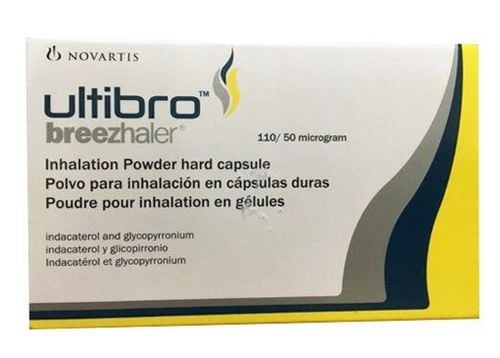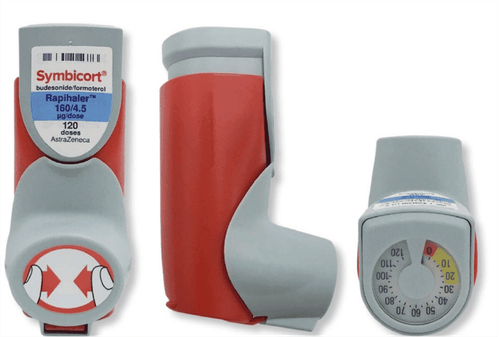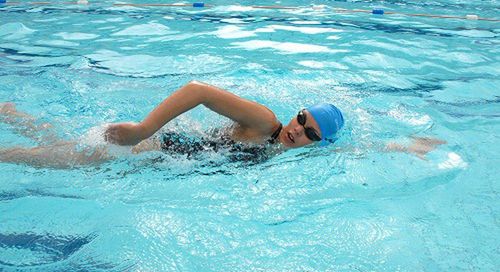This is an automatically translated article.
Water exercise is a growing trend among young fitness enthusiasts and healthy kids in places where swimming pools, gyms and other facilities provide training Specialized, modern. As a result, water exercises are likely to appeal to a wider audience than ever before.
1. How are aquatic exercises understood?
Water exercise is a low-impact activity that takes the pressure off your bones, joints and muscles. Water also provides natural resistance, which can help strengthen your muscles.
Water exercise can also provide a number of health benefits, such as improved heart health, reduced stress, and improved endurance and muscle strength. Exercising in the water can be a great way to incorporate physical activity into your life. You can even exercise in the water if you don't know how to swim.
You can start with walking in the water. In waist-high water, walk across the pool and swing your arms like you would walking on land. Avoid walking on tiptoes and keep your back straight. Squeeze your abs to avoid leaning too far forward or to the side.
To increase resistance as your hands and arms move through the water, wear hand nets or other resistance devices. Water shoes can help you maintain traction at the bottom of the pool.
2. Benefits of aquatic exercises (under water)
One of the benefits of exercising in the water is that just being in the water is enough for you to exercise. Your every movement in the water must be intentional to counteract the constant pressure of the water on your body.
2.1. Waterproof Because water is a thicker medium than air, when moving through water, the resistance of water can be from 4 to 44 times the resistance of air. Using water resistance in exercise is like using weights or a machine on land, but safer.
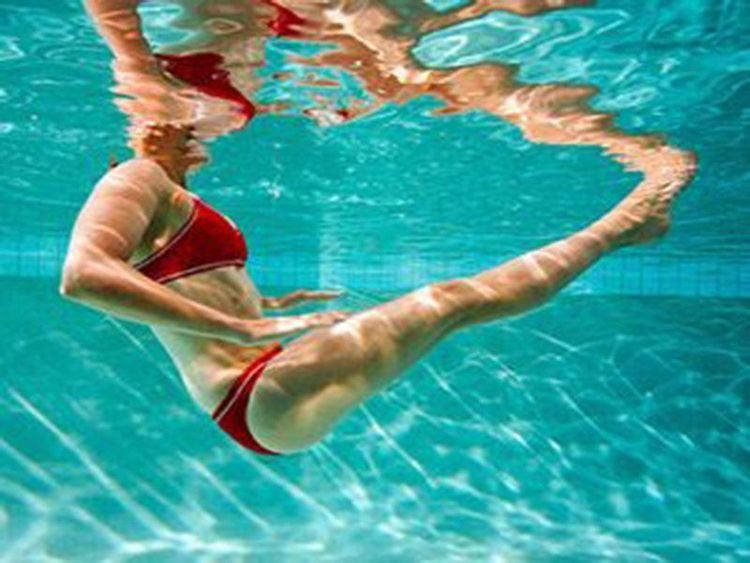
Tập luyện dưới nước giúp bạn đốt cháy nhiều calo hơn so với cùng bài tập trên cạn
2.2. Breathing exercises People with COPD and other lung conditions have significantly benefited from exercises while in the water. Most of them were super excited to be able to go through an entire aquatic aerobics class without fatigue or needing a snorkel. The support of water allows the patient to function properly in the heart while helping to maintain good oxygen saturation in the blood.
2.3. Buoyancy In chest-deep water, about 80% of your body weight is buoyant. As a result, you're really only bearing 20% of your weight when you exercise. Exercising in the water is much safer, your joints and muscles are hardly stressed.
2.4. Cooling effect Because you're constantly moving in the water, cool water is constantly moving around you, cooling you down while you're exercising. You never feel too hot and sweaty.
2.5. Massage effect The hydrostatic pressure of water on the body, joints, muscles and internal organs, massages and comforts all parts of the body as you exercise. You never feel tired.
2.6. Build Strength Since water has more resistance than air, working out in the pool can make the same exercises on land more difficult in the water.
Heavier resistance can engage your muscles more fully and also help you burn more calories in a shorter amount of time. Water exercises allow you to do an excellent cardiovascular workout, and at the same time strengthen: strength, endurance, flexibility.
3. Aquatic exercises (under water)
3.1. Deep Water Walk with Hand Grid When you're comfortable walking in waist-high water, try walking in deeper water. Keep your back straight and tighten your abs to avoid leaning too far forward or to the side.
To help you stay above water, you can place a noodle between your legs. Make sure that the noodles in the back are higher than in the front. If you can't swim, wear a life jacket or life vest in deep water. To increase resistance as your hands and arms move through the water, wear a hand net. Water shoes can help you maintain traction at the bottom of the pool. For a more intense workout, consider jogging in deep water.
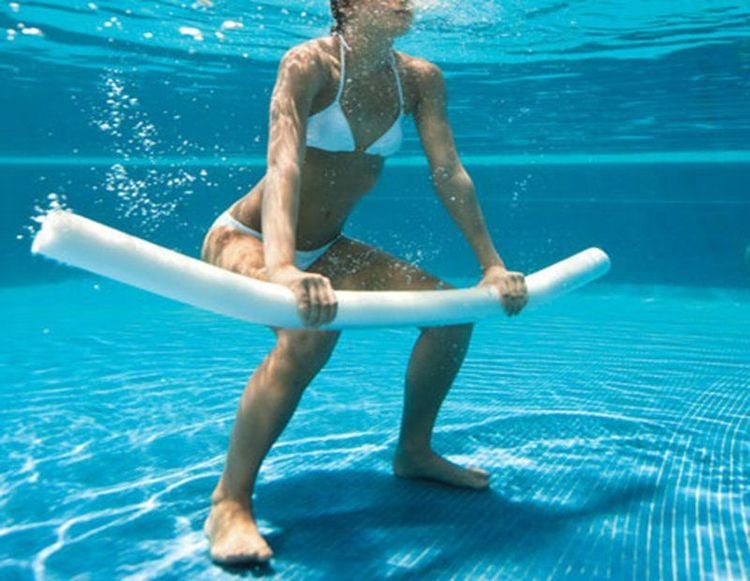
Nên thực hiện các bài tập thủy sinh đúng kỹ thuật để mang lại hiệu quả tập luyện cao nhất
3.2. Arm Exercises Using the Grid Grid can help you strengthen your biceps and triceps in the water. Wearing hand nets, stand in waist-high water, arms hanging down, palms facing forward and elbows close to body.
Raise your arms to level with the water, keeping your elbows close to your body and your wrists straight. Then change direction and push down until the arm is straight again. Repeat 12 to 15 times or until you feel tired.
3.3. Arm exercises using water dumbbells Water dumbbells are foam dumbbells that create resistance under water. Start with your arms at your sides. Grip the water bar with your palms facing up. Raise your arms to level with the water, keeping your elbows close to your body and your wrists straight.
Then flip the bar over so that the palm is facing the bottom of the pool. Push your arms down until your arms are straight again. Repeat 12 to 15 times or until you feel tired.
3.4. Endurance Exercise Using Kickboards Kickboards provide a different kind of resistance. Stand up straight, legs comfortably apart, and abs tight. Extend your right arm and hold the pedals at each end.
Keeping your left elbow close to your body, move the pedals towards the middle of your body. Return to the starting position and repeat 12 to 15 times or until you feel tired. Then, extend your left arm and repeat the exercise on the other side.
3.5. Noodle Legs Exercise To strengthen your calf muscles, tie a knot around your foot or water shoe. Stand with your back to the side of the tank in waist-high water, resting your arms on the sides of the tank for stability. Straighten your leg in front of you, then bend your knee to a 90-degree position.
Return to the starting position and repeat 12 to 15 times or until you feel tired. Tie the noodle into a knot around your other foot or water shoe and repeat with the other foot.
Water exercise can be fun at any age, size or fitness level whether you're trying it out on your own or signing up for a class. Consider taking water exercise classes held at your local fitness center or local pool.
Please follow the website ( www.vinmec.com ) for more information on health care instructions, which we will update regularly.
Please dial HOTLINE for more information or register for an appointment HERE. Download MyVinmec app to make appointments faster and to manage your bookings easily.





